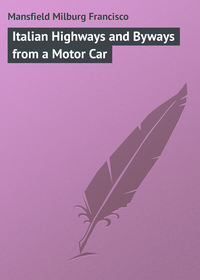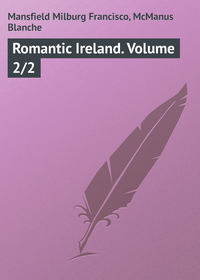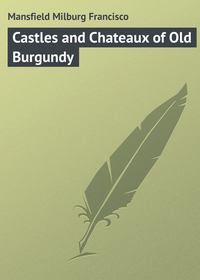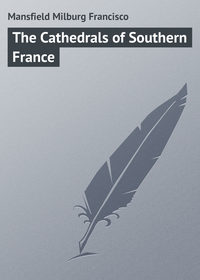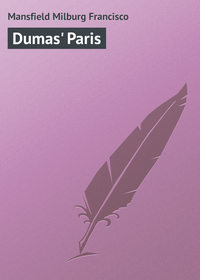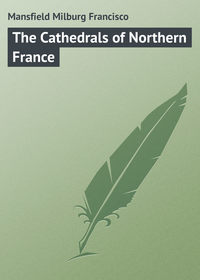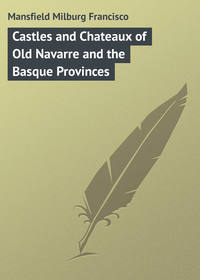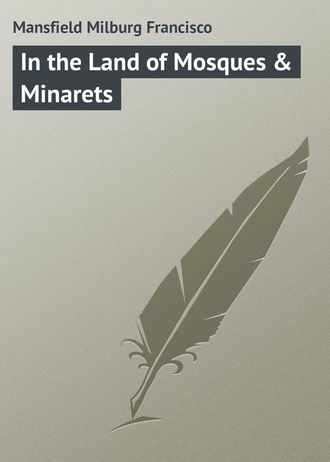 полная версия
полная версияIn the Land of Mosques & Minarets
This sort of thing is at its best at Tunis. Wine, olives, dates and phosphates are each contributing to the prosperity of Tunis to a remarkable degree, and the development of each industry is increasing as nowhere else, not even in Algeria. In 1900 the vineyards of Tunisia increased over two thousand hectares, and in all numbered nearly twelve thousand hectares, of which one-quarter at least were native owned.
The wine crop in 1900 was 225,000 hectolitres, an increase of nearly thirty per cent, over the season before, and it is still increasing. The olive brings an enormous profit to its exploiters, and the Tunisian olive and Tunisian olive oil rank high in the markets of the world. Originally ancient Lybia was one of the first countries known to produce olive oil on a commercial scale. All varieties of olive are grown on Tunisian soil. The illustration herewith marks the species.
The art of making olive oil goes back to the god Mercury. In the time of Moses and of Job the culture of the olive was greatly in repute. The exotics of the East and of Greece took the olive-leaf for a symbol, but the fighting, quarrelsome Romans would have none of it; the bay leaf and the palm of victory were all-sufficient for them.
They soon came to know its value, however, when they overran North Africa, and they exploited the olive-groves as they did the plateau wheat belt. Cæsar even nourished his armies on such other local products as figs and dates and found them strength-giving and sinew-making. North Africa has ever been a garde-manger of nations.
What Tunisia needs is capital, and everybody knows it. The date-palm and the olive give the greatest return of all the agricultural exploitations of the country, and after them the vine, and finally the orange-tree, the lemon-tree, the fig and the almond. Each and every one of these fruits requires a different condition of soil and climate. Fortunately all are here, and that is why Tunisia is going some day to be a gold mine for all who invest their capital in the exploitation of its soil.
The date requires a warmth and dryness of atmosphere which is found nowhere so suitable as in the Djerid and the Nefzaoua in the south. Here the soil is of just the right sandy composition, and rain is comparatively unknown. For this reason the date here flourishes better than the olive, which accommodates itself readily to the Sahel and the mountains of the north. Of the vast production of dates in this region, by far the greater part is consumed at home, the exportation of a million francs’ worth per annum being but a small proportion of the whole.
Almost every newly exploited tourist ground has an individual brand of pottery which collectors rave over, though it may be the ordinary variety of cooking utensils which are common to the region. This is true of Tunis and the potteries of Nabeul.
Besides mere utilitarian articles for domestic use, the shapes and forms which these Arab pottery-workers give to their vases and jugs make them really characteristic and beautiful objets d’art; and they are not expensive. The loving marks of the potter’s thumb are over all, and his crude ideas of form and colour are something which more highly trained craftsmen often miss when they come to manufacturing “art-pottery,” as the name is known to collectors.
A cruchon decorated with a band of angular camels and queer zigzag rows of green or red has more of that quality called “character” than the finest lustre of the Golfe de Jouan or the faïence of Rouen. For five francs one may buy three very imposing examples of jugs, vases or water-bottles, and make his friends at home as happy as if he brought them a string of coral (made of celluloid, which is mostly what one gets in Italy to-day), or a carved ivory elephant of the Indies (made in Belgium of zylonite). The real art sense often expresses itself in the common, ordinary products of a country, though not every tourist seems to know this. Let the collector who wants a new fad collect “peasant pottery,” and never pay over half a dollar for any one piece.
Closely allied with the pottery of Nabeul is a more commercially grand enterprise which has recently been undertaken in the Sahel south of Tunis. Not all the wealth of the vastly productive though undeveloped countryside lies in cereals, phosphates or olive-trees. There is a species of clay which is suitable, apparently, to all forms of ceramic fabrication.
In one of the most picturesque corners of the littoral, just south of Monastir, is a factory which turns out the most beautiful glazed brick and tiles that one ever cast his eye upon. The red-tiled roof of convention may now be expected to give way to one of iridescent, dazzling green, if the industry goes on prospering; and no more will the brick-yards of Marseilles sell their dull, conventional product throughout Tunisia; and no more will the steamship companies grow wealthy off this dead-weight freight. The Italian or Maltese balancelle will deliver these magnificent coloured bricks and tiles of Monastir all over the Mediterranean shores; and a variety of colour will come into the landscape of the fishermen’s huts and the farmhouses which the artists of a former generation knew not of.
Tunis is undergoing a great commercial development, and if the gold of Ophir is not some day found beneath its soil, many who have predicted its undeveloped riches will be surprised and disappointed.
The railways of Tunisia are not at all adequate to the needs of the country, but they are growing rapidly. When the line is finally built linking Sousse and Sfax (the service is now performed by automobile by travellers, or on camel-back; or by Italian or Arab barques by water, for merchandise), there will be approximately 1,700 kilometres of single-track road. Algeria with an area four times as great has but 3,100 kilometres of railway.
The railway exploitation of Tunisia has not as yet brought any great profit to its founders. The net profit after the cost of exploitation, in 1904, was but half a million francs; but it has a bright future.
Great efforts are being made by the government authorities, and the railway officials as well, towards colonizing the Régence with French citizens. A million and a half of francs have already been spent by the government, in addition to free grants of land, towards this colonization, and in 1904 alone land to the value of a million and a half was sold to French immigrants.
If one wants to travel into the interior of Tunisia, off the beaten track, say to Médenine, beyond Gabès; or to Tozeur, he should find some way of fitting himself out with an authorization and recommendation from the French “civil control.” This recommendation will be written in Arabic, and one will not be able to read it, nor will half the officials to whom it is shown en route; but one and all will be impressed by the official seal, the parchment, the heading “Praise to Allah the only God,” and the date at the bottom, – which will read something as follows: 22 Djoumada 2d, 1307, – this being the date of the Hegira. Any document as mysterious and formal as this will accomplish much anywhere, so far as its powers as an open sesame are concerned.
CHAPTER V
THE RELIGION OF THE MUSSULMAN
NO one unless he be a Mohammedan can hope to experience the sentiments and emotions born of the Mussulman religion, or explain the fundamental principles of the Koran. It is a thing apart from all other religions, and though we may recognize many of its principles as being good and worthy, only one of the faithful can really absorb them as a part of his daily life.
The one underlying tenet which we all recognize as being something understood of all people, be they fanatics or not, is that of the purification by water. No Mussulman commences his devotions without first washing himself; he may take a conventional bath; he may wash his feet, face and hands; or he may go through a mere perfunctory sprinkling; but the form or ceremony has been complied with, and then, and then only, may he invoke Allah and his Prophet.
From the Atlantic to the Malay seas, from Turkestan to the Congo, more than two hundred millions of men proclaim that there is no God but Allah and that Mohammed is his Prophet. Besides these well-defined geographical limits, the Mohammedans are everywhere. You find them in China, in Japan, in India, in the Philippines, and scattered throughout Continental Europe. The strength of Islam is everywhere in evidence. And whether it is mere tribal warfare that brings it to our notice, or a “Holy War” against the infidels of Christians, as is really the case in Morocco at the present time, it is to be reckoned with as a power, as much so as the “yellow plague” of the Chinese and Japanese.
In all Islamic lands religion stands first. The Sultans – those of Constantinople and Fez – are religious heads even before they are accounted as chiefs of the state. And through its sub-heads and brotherhoods and secret societies, Islamism is spreading with a rapidity which most of the supposedly worldly-wise have hitherto ignored entirely.
In the African possessions of France alone there are in the neighbourhood of a hundred head-centres of Islamism which, until a very recent time, preached obstruction to the foreigner – and perhaps still does so in secret. France came to know and realize this very soon, and when she took over the civil and military charge of Algeria and Tunisia, she recognized the only successful policy as being one of coöperation and not of coercion. Three hundred organizations, then, – more religious sects or communities than political divisions of a people – were kept intact in most instances, and the Sheiks who formerly got obedience from their people as the sub-religious heads of this vast organization became practically mayors, councillors and justices of the peace. It was the only thing to do, and how well it has worked is best shown by the fact that Algeria has become the most flourishing and loyal of all French colonies.
These Sheiks of Algeria and Tunisia, to whom France has granted so much complimentary power, contributed in cash, in 1890, the sum of sixteen millions of francs which they had collected of their fellow Mussulmans. A gigantic sum when it is realized that it may originally have been paid to the Sheik in kind, a quintal of wheat, a half dozen sheep, or a few hundred kilos of dates. The Sheik doubtless makes something for himself as all this commodity passes through his hands, but what would you, official sinning is not confined to Mohammedans.
In return for his services the Arab Sheik, the emissary of the French civil control, gets a more modest salary than would his Gallic substitute, and he does his work more efficiently. His powers, with the backing of France, have been largely increased, even with his own people, and he is a part of a great political machine. He may even be a very learned person, an expert linguist in French, and the bearer of many decorations, even the Grand Cross of the Legion of Honour. Is it any wonder that his country is peaceful and everybody satisfied! He breaks out once and again with some childish, petulant protest and compromises the whole thing; but then some French official at headquarters makes him a present of a gross of wax candles, a bird-cage or a phonograph, and again everything runs smoothly for a space.
Before the time of Mohammed the Arabs professed diverse religions; some were Christians; some were Jews; some were fire-worshippers; and some mere idol-worshippers. Among this latter were a sect who made great idols of dough which in time became baked or very nearly petrified, and thus served the tribe of the Beni Hafa as food in time of famine. A very practical religion this!
“There is no God but AllahAnd Mohammed is his prophet.”The faith of Islam is an obscure thing. It is supposedly a compound of the Christian and Hebrew religions – with variations. The sects of Islam are many, the two chief being the Shiites and the Sunnites. The former recognized Ali, the cousin of Mohammed, as the true successor of the Prophet, and collectively they form the major part of the Mussulman faith of India and Persia.
The orthodox followers of the Prophet, the faithful of Turkey, Arabia, Egypt, Algeria, Tunisia and Morocco, have added to the precepts of the Koran the books of traditional sayings and maxims of the Prophet (a sort of Apocrypha, it would seem), and recognize as his successors the first four Kalifs – those of Bagdad, Cairo, Constantinople and Fez – as the legitimate successors of Mohammed.
This chief orthodox sect is further subdivided into Hanefites, Malikites, Shafiites and Hanabites, – foundations of various relations of the Prophet. They vary somewhat in their interpretations of the Koran and certain conclusions with regard to the “law” of the Prophet, but they are as one with regard to the precepts of purification, prayer, fasting, pilgrimage and charity towards their fellow men, and against the outside world of infidels.
The Arabs and Berbères Arabisés of North Africa are mostly Hanefites and Malikites.
Five times a day the Mussulman prays: (i) at fedjeur (daybreak – before sunrise); (ii) at eulam (after meridian); (iii) at dohar (midway between noon and nightfall); (iv) at aseur (just after sunset, when his day of labour is finished); and (v) at mogreb (when night actually falls). There is sometimes a sixth prayer at eucha (supper-time).
Not all professing Mussulmans pray five times a day. There are backsliders in the Mussulman religion as in other religions; but both in the cities and the countryside the truly devout, singly, or even in groups of a score or a hundred at a time, make their “sunset devotions” with regularity and impressiveness. The devout Arab will dismount from his horse, mule or camel, will come out of his tent or house, and will even alight from a railway train or diligence if opportunity offers, and say his sunset prayer in the open air. The Mussulman does not invariably need the stimulus of a temple to express himself towards his God. In that respect he is certainly far ahead of some of the other sects found throughout the world.
The spectacle of the Mussulman’s sunset prayer in the desert – standing barefooted on his little rug or carpet and facing the east and Mecca – is impressive beyond words; and not even the most skeptical would deny to the simple faith of Islam the virtues granted to many religions more ceremoniously complicated. The ceremonies in the mosques are less impressive than those in the open air.
The following résumé of the symbolism of the eight positions of the Mussulmans’ prayer explains the attitudes and postures that one remarks everywhere in the world of Islam.
I. Standing. “I offer my God, with sincere heart and with my face towards Mecca, two rakôh (prayers).
II. Still standing, but with open palms raised to each side of the face, the thumbs touching the ears – “God is Great!”
III. Still standing; with the right hand crossing the left over the chest, he repeats, “Holiness to Thee, oh, God! Praise be to
Thee! Great is Thy name!” – and other prayers from the Koran.
IV. Still standing; the body inclined forward and the hands, with fingers separated, placed upon the knees. “I extol the Sanctity of the Great God!”
V. Falling upon the knees – “God is Great!”
VI. Still on the knees he makes a bow (three times repeated), the forehead and nose touching the ground, “I extol the Sanctity of my God, the Most High!”
This practically finishes one rakôh, but there are usually added certain recitations from the first chapter of the Koran, with perhaps a repetition of the postures.
VII. Before finally leaving the place of prayer the act of witness, Tashabhud, is given. He raises the forefinger of his right hand and repeats: “I affirm that there is no God but God and that Mohammed is the Apostle of God.”
VIII. The last position is the Munjat, or supplication, when are repeated certain suitable verses of the Koran.
Christ enters into the Mussulman religion as one of the Prophets of God. They believe that Christ was, before the coming of Mohammed, the greatest of all Prophets.
All good Mussulmans recite the prayers of their beads, just as all good Catholics say their chaplets. The Mussulman has a string of ninety-nine beads, each standing for one of the ninety-nine perfections of Allah. This rosary is often elaborate and costly, interspersed here and there with jewels; but more often than not, even with wealthy Mussulmans, it is a string of crude wooden beads. The faith of Islam is a simple one, not a showy one.
The Friday prayer at the mosques is one of the events to see in a Mussulman country. Public prayer is a social event with Mohammedans, as it is with many Christians. Soon after the sun has marked high noon, and while the siesta is still the chief blessing with many, the throng follows the first zoual or call of the muezzin.
Everything is burning and brilliant under an ardent southern sun, and a scintillating, dazzling reflection comes from each whitewashed wall until one is almost blinded. After this the cool shadows of the mosque are most refreshing. Barefooted the Mussulman throng threads its way among the myriad pillars of the court and enters the sanctuary where daylight filters dimly through a sieve of iron-latticed windows.
Praying men are everywhere, – men of the town, and nomad Arabs from the desert whose business has brought them thither. The women are all at the cemetery talking scandal, for except on special occasions, the Mussulman women are not admitted to the Holy Day (Friday) prayers in the mosques. This is in accordance to the law of the Prophet. Under a great dome a ruddier, more brilliant light showers down on the students and professors who psalm the verses of the Koran in a monotonous wail; while still farther to the rear is the infants’ school, whose pupils repeat their lessons in crackling singsong voices all day long to a pair of bearded, turbaned elders. Here and there, backed up against a pillar, a taleb recites his litany to the Prophet. All these voices blend in a murmur undistinguishable from any other conglomerate sound, except that it is manifestly human.
Suddenly, from high above, on the gallery of the minaret, rings out the muezzin’s second call to prayer, and like the reverberant light, it seems to filter down from the unknown.
With face towards Mecca the imam reads the Khotba, a long, dreary prayer of exhortation, but no more monotonous than the cut and dried sermon which one mostly gets in Christian churches. The imam is not a priest as is known of Christendom; the religion of Islam has no regular clergy; he is simply the wisest elder among the personnel of the mosque.
All through the service, as indeed at all times, a great calm reigns throughout every Mohammedan mosque. At the end of the last exhorting couplet issuing from between the lips of the imam a naïve joy, as of a relief from a great oppression, spreads over the assembled faithful and all rush for the open, as do congregations of other faiths. One religion is not so very different from another after all. It is only a matter of belief, not of the mode of expressing one’s adherence to that belief.
“May peace be thine, O Mohammed, Prophet of God. Ruler of Mecca and Medina and Lord of all Mussulmans now and always.”
This finishes the service of the mosque.
From the opaque obscurity of the maze of the mosque’s interior one comes suddenly again into the light of day. To a burning African landscape from the humidity of a cloister.
Woman’s position in Islam is peculiar. It is not according to our notions of what is right and proper, and there is no looked-for or hoped-for emancipation to be thought of. The question is both a social and a religious one. Those few Europeans who have really studied the harem as an institution have found, however, that its establishment and continuance is a plan that works well, and that the majority of these supposedly unhappy wives really love their husbands, and their destiny. If this is so, what business is it of ours to criticize the conduct of the ménage of the Arab or the Turk. The Prophet himself said that woman was the jewel and the perfume of this world.
Theoretically the Mussulman idea is that man is the superior creature physically, and that it is his business alone to mingle and rub shoulders with the world, leaving his wives, members of the fragile sex, to raise his family, embellish his life and console him in time of grief. All other things apart, surely these are good enough principles for anybody to found domestic bliss upon. And these are the principal tenets of the domestic creed of the Moslem. He is often not the villain he is painted. To continue the words of the Prophet – Mohammed said one day to his companions: “Would you know the most valuable possession of man? It is, then, an honest woman. She charms the eye, and is obedient, and guards his reputation intact during his absence from home.” Really the Islamic faith goes a bit farther, for it counsels man to “cloister his wife as a prevention of jealousy and doubt, the mortal poisons, the terrible unpitying destroyers of conjugal quietude.” This, too, seems good advice, like many other of the precepts of the Koran.
Many of these Arab women were born within the harem’s walls, and know not any other modes of life as preferable to their own. They regard the daily round of liberty of the European woman as an unreal, undesirable state. The harem has been the theatre of their joys since infancy, and they have become so habituated to it that their life of seclusion becomes a second nature. They would not flee the sill of the great doorway into the outer world if they could, and their only change of locale is to pass from the harem of the husband of their mother to that of their spouse. In the harem the Arab woman is cared for with an unthought-of luxury. All the goods and chattels that their husband values most go to enrich the harem walls and floors. The harem is a sumptuous, glorious apartment compared to the simplicity with which the master of the house surrounds himself in his own quarters.
It is the opinion of that indefatigable traveller and student of exotic things, Edmond de Amicis, that the Arab concedes nothing to the European in his chivalrous treatment of woman. “No Arab dares lift an offending hand against a woman in public.” “No Arab soldier, even in the tumult of attack, would think of maltreating even the most insolent of womenkind.” And yet Europeans of most nationalities have been known to do both these things.
In her cloister, or to be more exact, in her boudoir, the Arab woman, and particularly the mother, receives the most respectful homage and solicitude from all the household. According to the Koran the children are admonished to respect the persons of those who bore them, and a verbal declaration of the Prophet is set down as: “A child may gain Paradise only by following in the footsteps of its mother.”
The educated and advanced Arabs of the towns have done much to disabuse the public of any false preconceived ideas concerning Arab womenfolk. Contrary to common belief the Arab woman is often the intellectual and social equal of her spouse. It was only the absurd jealousy of the old-school Mussulmans that annihilated for ever the faculties of their wives.
The portrait gallery of celebrated Mussulman women is not large, but one does not forget Zobeïdah, who inspired and aided the illustrious Haroun-Al-Rachid. Islam is not in its decadence, but its sponsors are awakening to the fact that they must keep abreast of the times.
The Friday promenade of the Mussulman woman of the towns to the cemetery is her only outing, the only day off allowed her. She makes as much of it as possible, but it is a sad proceeding at best.
The Arab tomb is, generally speaking, a thing of simplicity, a simple slab bearing the Arab words for the sentiment “Hic jacet.” The exception is in the marabout tombs or koubas, which are often monumental, though of comparatively small dimensions, well built, symmetrical, and surmounted by a dome or cupola.
The word marabout signifies first of all a holy man of the Mohammedan sect, a réligieux in fact, one whose vows, life and service is devoted to his God. Furthermore the same word is applied to the tiny mosque-like tombs distributed throughout the Arab peopled lands, which are served by a marabout. The two entities have become somehow indistinguishable as to name.




